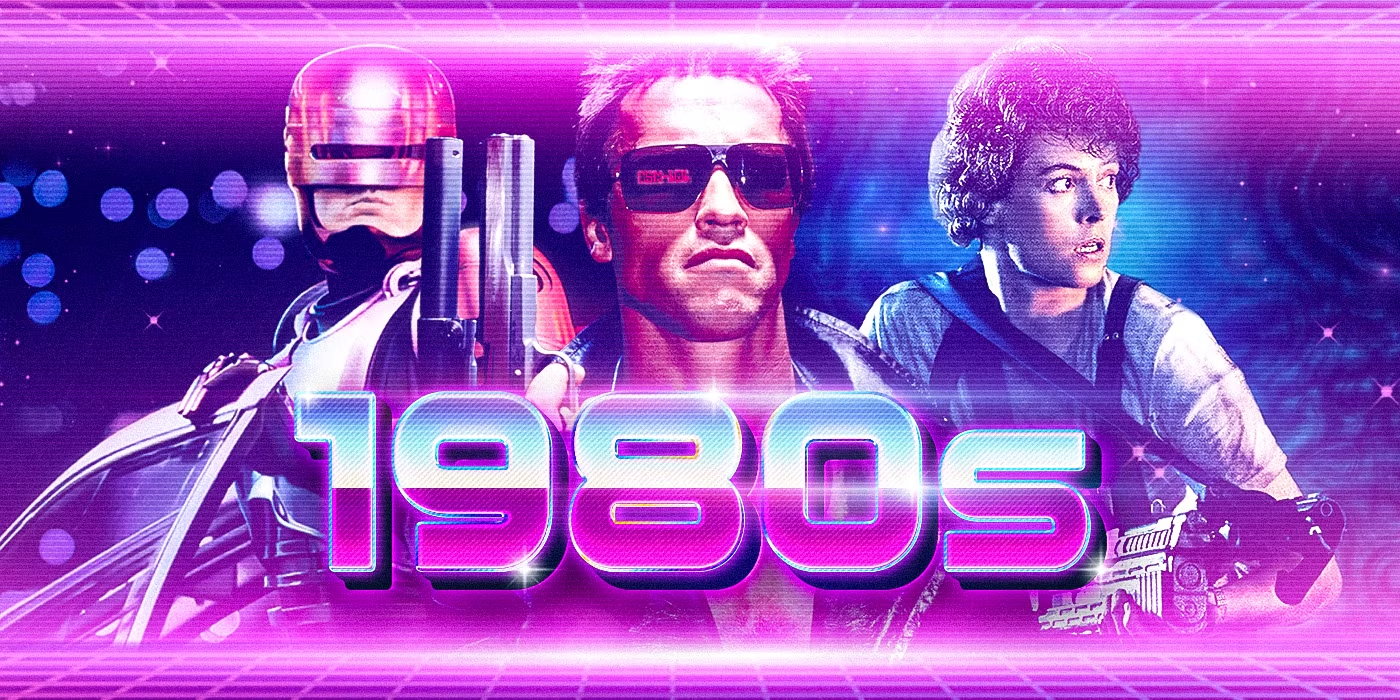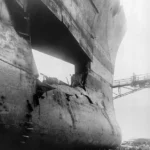The 1980s saw the rise of action movies that captivated audiences with their high-octane thrills and larger-than-life heroes. These films left an indelible mark on popular culture, influencing fashion, music, and even everyday language. Action movies of the 1980s defined the era by establishing iconic characters, memorable one-liners, and a distinctive visual style that continues to resonate with viewers today.
Stars like Arnold Schwarzenegger, Sylvester Stallone, and Bruce Willis became household names through their roles in blockbuster franchises. Their muscular physiques and tough-guy personas set a new standard for male action heroes. The films often featured over-the-top explosions, car chases, and fight scenes that pushed the boundaries of special effects technology.
These movies also reflected the social and political climate of the 1980s. Cold War tensions, urban crime, and American exceptionalism were common themes. The action genre’s popularity during this decade speaks to the audience’s desire for escapism and clear-cut stories of good triumphing over evil in an increasingly complex world.
Roots of the Action Movie Genre
The action movie genre has its origins in several earlier film styles. Westerns of the 1950s and 1960s laid important groundwork with their gunfights and heroic protagonists. These films established many tropes later adopted by action movies.
Martial arts films, especially those from Hong Kong in the 1970s, contributed dynamic fight choreography and acrobatic stunts. Bruce Lee’s work was particularly influential in bringing these elements to Western audiences.
Spy thrillers of the 1960s and early 1970s, like the James Bond franchise, introduced gadgets, international intrigue, and elaborate action sequences. These films helped expand the scope and scale of on-screen excitement.
The “tough guy” cop movies of the early 1970s, epitomized by Dirty Harry, set the template for the gritty urban action hero. These characters often operated outside the law to pursue justice.
Key influences on 1980s action movies:
- Westerns: Heroic protagonists, gunfights
- Martial arts films: Fight choreography, stunts
- Spy thrillers: Gadgets, international settings
- Cop movies: Urban settings, anti-hero leads
These diverse influences coalesced in the late 1970s and early 1980s, setting the stage for the action genre’s golden age.
Defining Features of 1980s Action Films
1980s action movies were characterized by larger-than-life heroes, often portrayed by muscular actors like Arnold Schwarzenegger and Sylvester Stallone. These protagonists typically embodied masculine ideals of strength, toughness, and individualism.
High-octane action sequences became a staple of the genre. Explosions, car chases, and hand-to-hand combat scenes were commonly featured, with an emphasis on spectacle and excitement.
The plots often revolved around themes of revenge, rescue missions, or battling against overwhelming odds. Many films featured lone heroes taking on corrupt systems or powerful enemies.
Catchphrases and one-liners became iconic elements of these movies. Memorable quotes added humor and personality to the characters, enhancing their appeal to audiences.
Visual effects and practical stunts played a crucial role in creating thrilling action scenes. While CGI was limited, practical effects and stunt work were pushed to new heights.
Patriotic themes were prevalent in many 1980s action films. American values and exceptionalism were frequently celebrated, particularly in movies set against Cold War backdrops.
The villains in these films were often exaggerated and clearly defined. They ranged from Soviet agents to drug lords, providing clear antagonists for the heroes to overcome.
Soundtracks featuring synthesizer-heavy music and power ballads contributed to the distinct atmosphere of 1980s action cinema. These scores enhanced the emotional impact of key scenes.
Iconic Action Heroes of the ’80s
The 1980s saw the rise of larger-than-life action stars who became household names. These muscular actors dominated the box office with their explosive films and memorable one-liners.
Arnold Schwarzenegger’s Rise to Fame
Arnold Schwarzenegger burst onto the action scene in 1982 with “Conan the Barbarian.” His imposing physique and unique accent quickly made him a standout star. In 1984, “The Terminator” cemented his status as an action icon.
Schwarzenegger’s roles in “Commando” (1985) and “Predator” (1987) further established his action credentials. His characters often combined brute strength with dry humor, delivering quotable lines like “I’ll be back.”
By the end of the decade, Schwarzenegger had become one of Hollywood’s highest-paid actors. His films grossed billions worldwide, making him synonymous with ’80s action cinema.
Sylvester Stallone’s Impact
Sylvester Stallone’s “Rocky” series, which began in the ’70s, continued to be a major force in the ’80s. The sequels “Rocky III” (1982) and “Rocky IV” (1985) were massive box office hits.
Stallone created another iconic character with John Rambo in “First Blood” (1982). The Rambo sequels in 1985 and 1988 solidified his status as an action superstar.
Known for his muscular build and distinctive speaking style, Stallone embodied the tough-guy persona. His characters often overcame incredible odds, resonating with audiences worldwide.
Stallone’s influence extended beyond acting. He wrote and directed many of his films, shaping the action genre throughout the decade.
Influential Directors and Producers
The 1980s action movie genre was shaped by visionary filmmakers who pushed boundaries and set new standards. Their innovative approaches to storytelling and filmmaking techniques left an indelible mark on cinema.
John McTiernan’s Visionary Works
John McTiernan emerged as a powerhouse director in the 1980s action film landscape. His 1987 masterpiece “Predator” blended sci-fi elements with intense action sequences, creating a unique hybrid that captivated audiences. McTiernan’s follow-up, “Die Hard” (1988), revolutionized the genre with its confined setting and relatable protagonist.
The film’s success spawned numerous imitators and solidified Bruce Willis as an action star. McTiernan’s keen eye for suspense and his ability to craft memorable characters set him apart from his peers.
James Cameron’s Technological Advances
James Cameron’s contributions to 1980s action cinema were marked by groundbreaking visual effects and ambitious storytelling. His 1984 film “The Terminator” introduced audiences to complex time-travel narratives and impressive practical effects.
Cameron’s “Aliens” (1986) expanded on the original film’s premise, incorporating intense action sequences and pioneering special effects. His use of miniatures and practical effects set new standards for visual storytelling.
The director’s commitment to pushing technological boundaries would continue throughout his career, influencing future generations of filmmakers.
Cultural and Social Influence
1980s action movies left an indelible mark on popular culture. These films shaped fashion trends, with iconic looks becoming instantly recognizable. Leather jackets, aviator sunglasses, and muscle-bound physiques became synonymous with action heroes.
The tough-guy persona popularized by these movies influenced real-world behavior. Many young men emulated the macho attitudes and one-liners of their favorite characters. This phenomenon extended beyond clothing and mannerisms to impact broader social norms.
Action films of this era often reinforced traditional gender roles. Male protagonists were typically portrayed as hyper-masculine, while female characters were frequently relegated to supporting roles or damsels in distress. This representation contributed to ongoing discussions about gender stereotypes in media.
The movies’ depiction of violence sparked debates about its potential impact on viewers. Critics argued that the glorification of gunplay and explosions could desensitize audiences. Supporters countered that these films provided harmless escapism and catharsis.
Catchphrases from 1980s action films became deeply embedded in everyday language. Quotes like “I’ll be back” and “Yippee-ki-yay” entered the cultural lexicon, used far beyond their original context.
These movies also influenced other forms of entertainment. Video games, comic books, and toys frequently drew inspiration from popular action franchises. This cross-media pollination helped cement the genre’s place in pop culture history.
Classic 1980s Action Films
The 1980s saw the rise of iconic action movies that set new standards for the genre. Two franchises in particular left an indelible mark on cinema and popular culture.
Die Hard Series: Redefining the Genre
Die Hard (1988) revolutionized action films with its everyman hero, John McClane. Bruce Willis portrayed the resourceful New York cop battling terrorists in a Los Angeles skyscraper. The film’s confined setting and relatable protagonist were a departure from the musclebound heroes of earlier 80s action flicks.
Die Hard’s success spawned several sequels. Die Hard 2 (1990) continued McClane’s adventures, this time in an airport. Each installment raised the stakes and expanded the scale of action set pieces.
The series popularized the “lone hero against overwhelming odds” formula. It influenced countless action movies in the following decades.
The Terminator: Merging Sci-Fi and Action
The Terminator (1984) blended science fiction with intense action sequences. James Cameron’s film introduced Arnold Schwarzenegger as the menacing cyborg assassin from the future.
The movie’s time-travel plot and groundbreaking special effects set it apart. It established Schwarzenegger as a major action star and launched a successful franchise.
Terminator 2: Judgment Day (1991) pushed the boundaries further with cutting-edge CGI. The sequel’s liquid metal T-1000 antagonist became an iconic movie villain. Both films balanced high-octane action with thought-provoking themes about technology and fate.
The Evolution of Special Effects in Action Films
The 1980s saw rapid advancements in special effects technology for action movies. Practical effects dominated early in the decade, with skilled technicians creating explosions, stunts, and miniatures on set.
Prosthetic makeup and animatronics brought fantastical creatures to life in films like “Predator” and “Aliens.” These practical techniques gave a tangible realism to otherworldly beings.
Computer-generated imagery (CGI) began emerging in the late 1980s. “Tron” (1982) pioneered early CGI, while “The Abyss” (1989) featured the first photorealistic CGI character.
Innovations in motion control cameras allowed for more complex shots. This technology enabled precise, repeatable camera movements for seamlessly combining live action with miniatures or matte paintings.
Stop-motion animation enhanced creature effects. Films like “RoboCop” used this technique to bring robotic characters to life with fluid movements.
Advances in pyrotechnics made action scenes more spectacular. Carefully choreographed explosions became a hallmark of 1980s blockbusters.
Blue and green screen technology improved throughout the decade. This allowed actors to be composited into impossible environments or dangerous situations safely.
By the end of the 1980s, filmmakers had a diverse toolkit of special effects at their disposal. The combination of practical and emerging digital techniques set the stage for the CGI revolution of the 1990s.
Legacy of 1980s Action Movies in Modern Cinema
The influence of 1980s action movies continues to shape modern cinema. Many contemporary filmmakers draw inspiration from the iconic style and themes of that era.
Reboots and remakes of classic 1980s franchises have become common. Films like “Mad Max: Fury Road” and “Terminator: Dark Fate” aim to recapture the spirit of their 80s predecessors.
Action choreography in modern films often pays homage to 80s techniques. Hand-to-hand combat scenes and practical stunts reminiscent of that decade can be seen in movies like “John Wick” and “Mission: Impossible.”
The over-the-top nature of 80s action heroes lives on in today’s blockbusters. Characters like Dwayne Johnson’s roles in “Fast & Furious” films embody the larger-than-life personas popularized in the 80s.
Visual aesthetics from 80s action movies have made a comeback. Neon-soaked color palettes and retro-futuristic designs feature prominently in films like “Atomic Blonde” and “Ready Player One.”
Synth-heavy musical scores, a staple of 80s action flicks, have experienced a resurgence. Modern composers often incorporate these elements to evoke nostalgia and create tension.
The quippy one-liners and catchphrases popularized by 80s action stars remain a beloved trope. Many current action heroes deliver similarly memorable lines, keeping this tradition alive.
Criticism and Analysis
1980s action movies faced both praise and criticism from audiences and film scholars. Their larger-than-life heroes and explosive set pieces captivated viewers, but some found fault with their simplistic narratives and exaggerated violence.
Critics often pointed to the films’ unrealistic portrayals of conflict resolution through force. They argued that these movies glorified violence and promoted a narrow view of masculinity.
The portrayal of women and minorities in many 1980s action films drew scrutiny. Female characters were frequently relegated to love interests or damsels in distress, while racial stereotypes were sometimes used for villains or comic relief.
Despite these criticisms, many praised the technical innovations in special effects and stunt work. The decade saw significant advancements in practical effects, enhancing the visual spectacle of action sequences.
Some analysts viewed these films as reflections of Reagan-era politics and Cold War tensions. The heroic American protagonists often battled Soviet or communist enemies, mirroring real-world geopolitical conflicts.
Film scholars have noted the influence of 1980s action movies on subsequent generations of filmmakers. Their impact can be seen in modern blockbusters, which often pay homage to or subvert tropes established during this era.
References
- American Film Institute (n.d.) – The Impact of 1980s Action Cinema on Hollywood Link
- British Film Institute (n.d.) – Explosions, Muscles, and Machismo: The Golden Age of Action Films Link
- The Hollywood Reporter (2020) – How ‘Die Hard’ and ‘The Terminator’ Redefined the Action Genre Link
- Vulture (2021) – From Stallone to Schwarzenegger: The 80s Action Heroes Who Ruled Hollywood Link
- Screen Rant (2022) – The Most Influential Action Movies of the 1980s and Their Lasting Legacy Link
- RogerEbert.com (n.d.) – 1980s Action Cinema: A Look at the Rise of Excess and Spectacle Link




